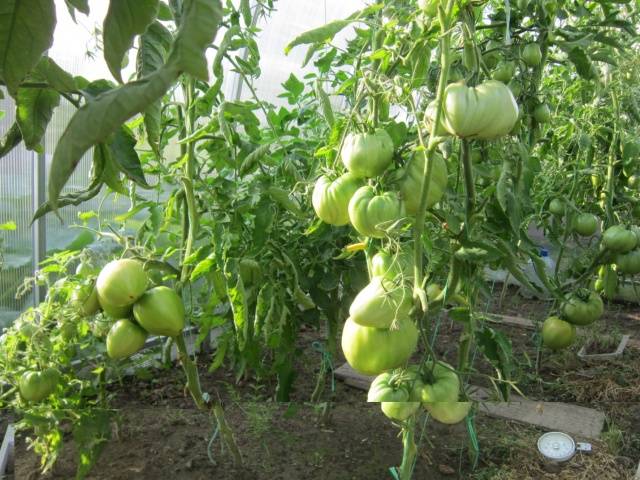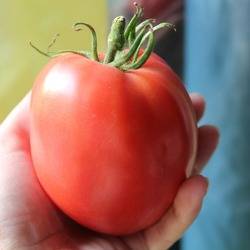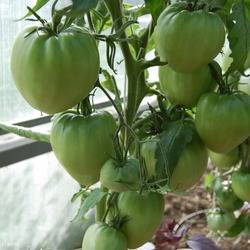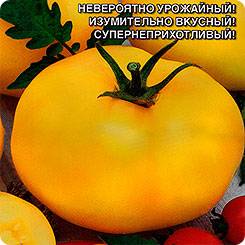Content
The Mikado variety is known to many gardeners as the Imperial tomato, which bears fruits of different colors. The tomatoes grow fleshy, tasty and quite large. A distinctive feature of the variety is its wide leaves, like those of potatoes. As for the color of the vegetable, it can be pink, golden, red and black. This is where the division of culture into subgroups came from. According to the characteristics and taste of the fruit, the Mikado tomato of each group is similar. However, for a complete overview, it is worth considering each variety separately.
Mikado pink
Let's start looking at the culture with the characteristics and description of the Mikado pink tomato variety, since fruits with this color are very popular. The ripening period for the harvest falls on the 110th day, which characterizes the tomato as a mid-season vegetable. Tall, indeterminate bush. The above-ground part grows with an open growing method to a height of more than 1 m. In a greenhouse, the stems of the bush stretch up to 2.5 m.
The Mikado pink tomato is famous for its large fruits. The average weight of a tomato is 250 g. Although in greenhouse conditions it is possible to grow fruits weighing up to 500 g. The pulp is tender, juicy, and turns pink when ripe. The skin is thin, but quite durable.Each bush grows from 8 to 12 fruits. Total yield per 1 m2 is 6–8 kg. The shape of the tomato is round, strongly flattened. There may be pronounced ribbing on the walls of the tomato.
Features of cultivation
Pink tomato is grown by seedlings. It is optimal to adhere to a planting pattern of 50x70 cm. The bush requires shaping. You can leave 1 or 2 stems. In the first case, the fruits will be larger, but fewer will be produced, and the plant will grow tall. In the second case, when forming a bush, a growing stepson is left under the first bunch of tomatoes. Later, a second stem will grow from it.
All excess shoots are removed from the plant. Pruning is usually done when the shoots have grown to about 5 cm in length. The lower tier of foliage from the bush is also torn off, since it is not needed. Firstly, the fruits are shaded from the sun, and constant dampness remains under the bush. This will cause the tomatoes to start to rot. Secondly, excess foliage draws juices from the plant. After all, a tomato is grown for harvest, and not for lush green mass.
In high humidity and hot weather, tomato bushes instantly turn yellow. According to gardeners, the best protection against late blight is a solution of Bordeaux mixture. Moreover, it is necessary to treat not only adult tomato bushes, but also the seedlings themselves a week before planting in a permanent place.
Reviews
Reviews about the Mikado pink tomato photo say that the variety is attractive for its fruits. Let's find out what else vegetable growers think about this crop.
Mikado Sibiriko
The Mikado Sibiriko tomato variety is not inferior in popularity to the pink variety, since its fruits have a similar color. The characteristics of the culture are similar. The plant is indeterminate and belongs to the mid-season tomatoes. In the open air, the bush will grow up to 1.8 m high, in a greenhouse - more than 2 m. Pasynkovka involves the removal of all unnecessary shoots. If I form a bush with two stems, then a stepson is left under the first brush.
When ripe, Sibiriko fruits become pink in color, and they differ from the previous variety in their heart-shaped shape. Tomatoes are very attractive when unripe and ripe. On the walls of the fruit near the attachment of the stalk, ribbing is observed. Tomatoes grow large. The average weight of a mature vegetable is 400 g, but there are also giants weighing about 600 g. The fleshy pulp is very tasty, there are few seeds. The yield is up to 8 kg per plant. Tomatoes are suitable for fresh consumption. The tough skin prevents the fruit from cracking, but it does not last long.
Features of cultivation
Considering the Mikado Sibiriko tomato reviews, photos, yield, it is worth noting that this variety is grown in the same way as seedlings. The time for sowing seeds is determined individually. At the time of planting, seedlings must be 65 days old. High yields can be achieved by planting three bushes per 1 m2. You can increase the number of plants to 4 pieces, but the yield will decrease significantly. As a result, the vegetable grower gains nothing, plus the threat of late blight increases. Caring for the crop involves similar actions that are taken for the entire Mikado variety. The bush is formed with 1 or 2 stems. The lower tier of foliage is removed. Timely watering, fertilizing, loosening the soil, and weeding are required. weed. It is important to perform preventive sprays against common nightshade diseases.
In the video you can get acquainted with the Sibiriko variety:
Reviews
Reviews about the Mikado Sibiriko tomato are most often positive. Let's read a couple of them.
Mikado black
The Mikado black tomato has a strange appearance, although the color of the vegetable does not correspond to the name. A fully ripe tomato turns brown or dark crimson in color with a brown-green tint. The mid-season variety has an indeterminate standard bush. In open ground, the stem is limited to a height of slightly more than 1 m. With a closed growing method, the bush grows up to 2 m in height. Tomatoes are grown with one or two stems. Excess stepsons are removed when they grow to 4 cm in length. The foliage of the lower tier is also cut off to allow the fruits access to sunlight.
According to the description, the Mikado black tomato differs from its counterparts mainly in the color of the pulp. The fruits grow round and strongly flattened. On the walls near the attachment of the stalk there is a pronounced ribbing similar to large folds. The skin is thin and durable. The tomato pulp is tasty; there are up to 8 seed chambers inside, but the grains are small. Dry matter content – no more than 5%. The average weight of a vegetable is 300 g, but larger specimens also grow.
With good care, the Mikado black tomato variety can produce a harvest of up to 9 kg per 1 m2. Tomatoes are not suitable for industrial greenhouse cultivation. The variety is thermophilic, which is why in cold regions there is a decrease in yield.
Tomatoes are usually consumed fresh. The fruits can be salted or pickled in a barrel. The juice is tasty, but not all vegetable growers like the unusual dark color.
Features of cultivation
The exact origin of the Mikado black variety is unknown. However, this vegetable has been grown for a long time. The crop bears fruit in almost all regions, but it is better not to grow such a tomato in Siberia. In the south and in the middle zone, tomatoes bear fruit before the onset of cold weather.The fruits are demanding of sunlight. If shaded, the vegetable loses its taste. The open growing method is preferable for warm areas. In other cases, a greenhouse will be required.
Considering the description of the Mikado black tomato variety, it should be noted that the plant loves loose soil and a lot of fertilizing. Formation and garter of the bush is required. Seedlings are planted 4 plants per 1 m2. If the area allows, then it is better to reduce the number of bushes to three. Watering is carried out at least 2 times a week, but you need to watch the weather.
The video shows the Mikado black variety:
Reviews
Now let's read reviews from vegetable growers about the Mikado black tomato.
Mikado red
Mikado red tomatoes of the middle ripening period have excellent taste. An indeterminate plant with a potato leaf shape, suitable for open and closed growing methods. The bush grows more than 1 m in height. The fruits are tied together in tassels. The bush is formed into 1 or 2 stems.A distinctive feature of the Mikado red tomato is its resistance to diseases.
The color of the fruit does not correspond slightly to the name of the variety. When ripe, the tomato turns dark pink or even burgundy. The shape of the fruit is round, strongly flattened with large folds of the walls at the point where the stalk is attached. The pulp is dense, with up to 10 seed chambers located inside. The average weight of the fruit is 270 g. The pulp contains up to 6% dry matter.
There is no point in considering a full description of the Mikado red tomato, since the conditions for caring for the crop are the same as for its fellows. The variety is suitable for cultivation in any area except Siberia and the Far Eastern region.
Mikado golden
The Mikado golden tomato of the mid-early period of ripening is distinguished by the pleasant yellow color of the fruit. The variety is more recommended for growing under film cover, although in the south it can be planted without it. The culture is not afraid of temperature changes. The fruits grow large, weighing up to 500 g. Tomatoes are more suitable for salads and juice. The shape of the fruit is round, strongly flattened. A faint ribbing is visible on the walls near the stalk.
The optimal scheme for planting seedlings is 30x50 cm. During the entire growing season, you need to apply at least 3 additional feedings. It is important to maintain regular watering, but excessive moisture can lead to cracking of the fruit.
Reviews
To summarize, let's read reviews from vegetable growers about yellow and red Mikado tomatoes.




















